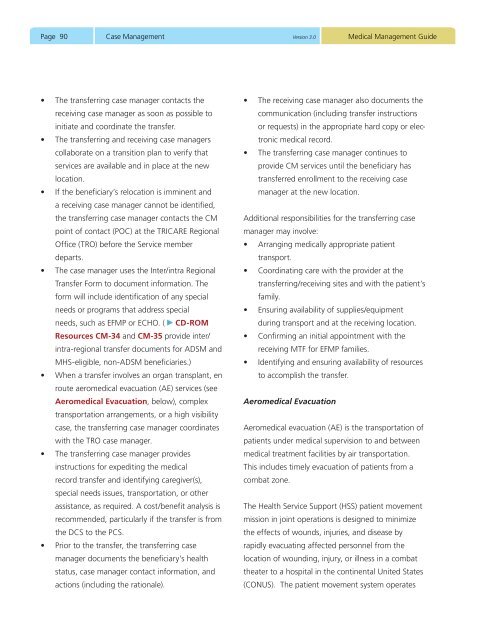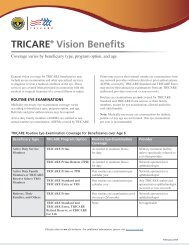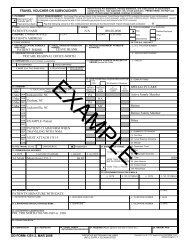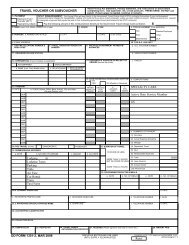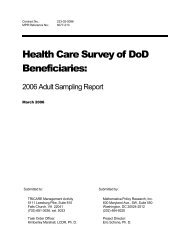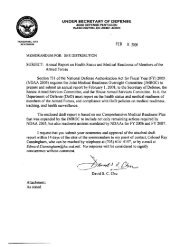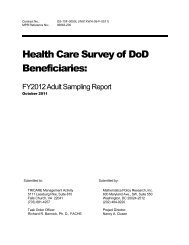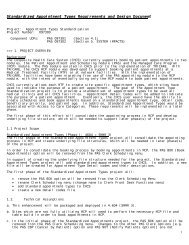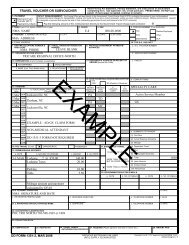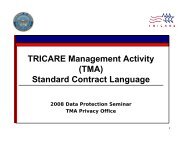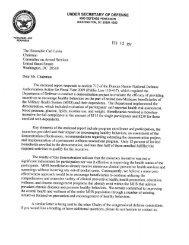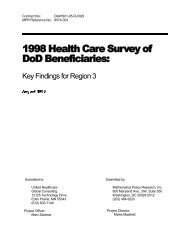Medical Management Guide, 2009, Version 3.0 - Tricare
Medical Management Guide, 2009, Version 3.0 - Tricare
Medical Management Guide, 2009, Version 3.0 - Tricare
- No tags were found...
You also want an ePaper? Increase the reach of your titles
YUMPU automatically turns print PDFs into web optimized ePapers that Google loves.
Page 90Case <strong>Management</strong> <strong>Version</strong> <strong>3.0</strong><strong>Medical</strong> <strong>Management</strong> <strong>Guide</strong>• The transferring case manager contacts thereceiving case manager as soon as possible toinitiate and coordinate the transfer.• The transferring and receiving case managerscollaborate on a transition plan to verify thatservices are available and in place at the newlocation.• If the beneficiary’s relocation is imminent anda receiving case manager cannot be identified,the transferring case manager contacts the CMpoint of contact (POC) at the TRICARE RegionalOffice (TRO) before the Service memberdeparts.• The case manager uses the Inter/intra RegionalTransfer Form to document information. Theform will include identification of any specialneeds or programs that address specialneeds, such as EFMP or ECHO. ( CD-ROMResources CM-34 and CM-35 provide inter/intra-regional transfer documents for ADSM andMHS-eligible, non-ADSM beneficiaries.)• When a transfer involves an organ transplant, enroute aeromedical evacuation (AE) services (seeAeromedical Evacuation, below), complextransportation arrangements, or a high visibilitycase, the transferring case manager coordinateswith the TRO case manager.• The transferring case manager providesinstructions for expediting the medicalrecord transfer and identifying caregiver(s),special needs issues, transportation, or otherassistance, as required. A cost/benefit analysis isrecommended, particularly if the transfer is fromthe DCS to the PCS.• Prior to the transfer, the transferring casemanager documents the beneficiary’s healthstatus, case manager contact information, andactions (including the rationale).• The receiving case manager also documents thecommunication (including transfer instructionsor requests) in the appropriate hard copy or electronicmedical record.• The transferring case manager continues toprovide CM services until the beneficiary hastransferred enrollment to the receiving casemanager at the new location.Additional responsibilities for the transferring casemanager may involve:• Arranging medically appropriate patienttransport.• Coordinating care with the provider at thetransferring/receiving sites and with the patient’sfamily.• Ensuring availability of supplies/equipmentduring transport and at the receiving location.• Confirming an initial appointment with thereceiving MTF for EFMP families.• Identifying and ensuring availability of resourcesto accomplish the transfer.Aeromedical EvacuationAeromedical evacuation (AE) is the transportation ofpatients under medical supervision to and betweenmedical treatment facilities by air transportation.This includes timely evacuation of patients from acombat zone.The Health Service Support (HSS) patient movementmission in joint operations is designed to minimizethe effects of wounds, injuries, and disease byrapidly evacuating affected personnel from thelocation of wounding, injury, or illness in a combattheater to a hospital in the continental United States(CONUS). The patient movement system operates


